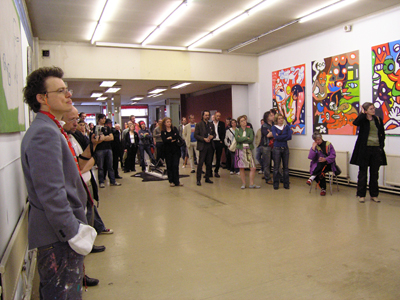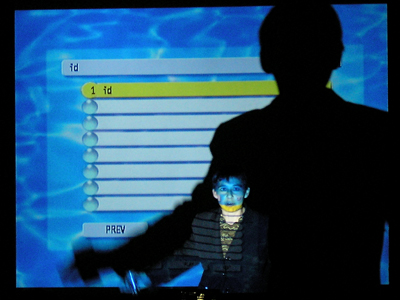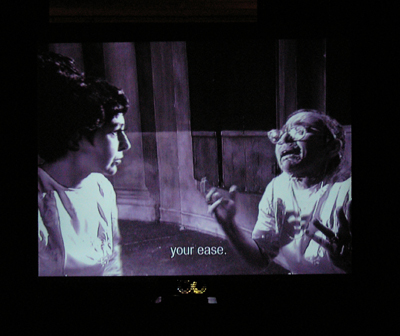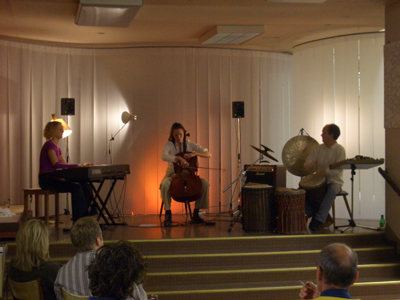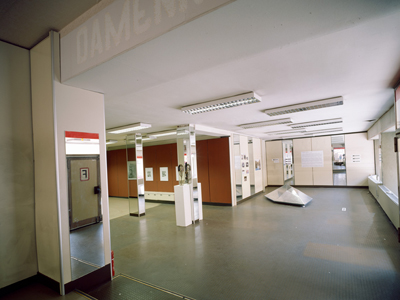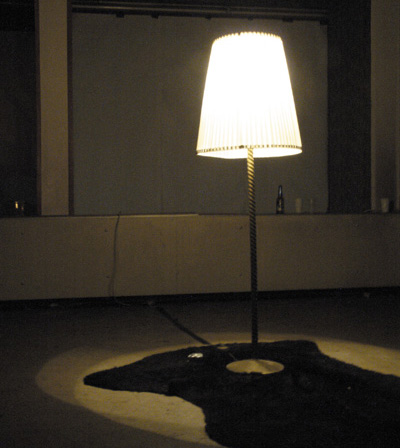but let’s enter the exhibition, mr. glober.
first stop: entrance fee 2 euro, for 1400 m2 exhibition space – quite
expensive, isn’t it? a little bit too much for a journalist, or is that
just another allusion to oskar seidenglanz’s slogan “das beste, billig”
(“the best, for cheap”). a little bit of sparkling wine, a little bit
of a bite, and the text ready-made – that would be so much more
interesting, wouldn’t it, mr. glober? glober remains silent. well, you
don’t have to pay the entrance fee to get the tour, of course. we’ll
gladly lay out 2 euro for you. and we are inside the building – the
foyer presents the protagonists and their amazing (hi)story.
those who are inclined to do so can stay here for a while and
delve into the lives of edith (social scientist) and walter (composer
and music critic, la times). you will also find information on ernest
dichter, founder of motivation research, who studied in vienna and
paris (1930–38). ernest dressed the windows for his uncle; now they are
revitalised as exhibition space (see grundstein). this part of the
exhibition requires time and calm, which we grant you wholeheartedly.
we now leave the historical part of the exhibition.
let’s have a look at some of the pieces of art that the dichters’ have collected over the last 50 years.
we see a group of white, dwarf-like sculptures. is this another
conference? – wir unter uns (we among ourselves) – a work by julie
hayward. we don’t want to interrupt her any longer. a little bit
further away, zos de wit shows us what it means to be a man.
there is a beautiful staircase where an artist of the larry fortansky
foundation is questioning the sense of a holy war. downstairs we
encounter claudia-maria luenig’s work. dubious terrain. rent an artist,
rent an artist... a deep voice draws us to the next station. ursula
nicolussi (trixi goldstein) wants to scrape up some money for herself
and her kids. in english? all right, one or two journalists will surely
manage to understand her. otherwise, please contact us. thank you.
we turn around and see a huge exhibition hall. real or not real? –
mirrors are truly brilliant. no cameras on the wall, only mirrors that
pull us along the ground floor. osei bargain bins, also part of the
collection. quite interesting, the things this family has collected
over the years.
one painted by michael vonbank, the other one decorated with irish
landscapes by heinz grosskopf, and paul roza`s “golden t imes” takes us
back to the end of the 30s and back to irrationality. we move on
alongside the mirrors and end up in front of a looking-glass (osei)
enwrapped by a silk worm. thank you, harald grünauer. we turn to the
left now. – a tree house? how cute… it is a model by behruz heschmat,
persian, who was banished from his country by the shah’s henchmen.
no land in sight. the tree is home, the tree encased in metal; but its
inhabitant, made of wood, lives on. behruz heschmat’s first tree house
will soon be exhibited in kufstein, austria. it seems behruz heschmat
understands the dichters well, and they him. we move on and see
elizabeth mcglynn standing in front of a celtic cult site in ireland
(black & white, 1991). a good choice, my dear dichters. vis-à-vis
abandoned rooms. where are we? – this is the old building, where the
dichter family worked and lived. black & white photography by heinz
grosskopf. puppet show. what’s the point of all this. bitte schütz mich
vor dem was ich will (- please protect me from what i want – quote
jenny holzer). but it’s quite a magnet, this puppet show. it makes
happy. a short turn and we see paintings by leslie demelo (...) to our
left. next to him is roland schütz, thinking about the year 1999. filip
gregorowicz looks over his wife’s shoulder and nilbar güres presents
her woman enwrapped in cloth and a clip from her performance. worth
seeing, definitely. opposite of this we see large-format paintings by
michael vonbank. it is time to deal with them. i hope you have enough
time, mr. glober.
what is youdontski doing in this collection? is he polish or not?
christof gantner speaks english. doesn’t matter, we move on. another
glimpse of behruz heschmat’s tree house. what is this thing appearing
behind us? it’s peter sandbichler’s new sculpture. is this a boat or a
stealth bomber? the explanation is on the opposite wall. thanks, peter.
a glance to the left. is this the künstlerhaus? where are we? entrance
fee again?! no, calm down, it is a photo art work by ursula janig.
well, let’s see what else is waiting for us. upstairs we see a
child. insideout by hiroko inoue, photos black & white, very
personal. peace and contemplation in here. a wooden screen separates
this work from the main room. let’s have a look, mr. glober. an
assemblage of small-format exhibits is presented on the opposite side
of the room (james clay, gustav böhm, oliver marceta, alina kunitsyna,
markus orsini-rosenberg, richard schütz, kurt mayr, cynthia schwertsik,
hans jörg zauner, therese schulmeister, sabine groschup, christoph
theiler, horst thaller, moana stemberger, christian stock). so this is
how the dichters enjoyed their collection privately. nice!
in between, hans scheierl displays his own past. what a strange kind of
music, what is this? – it attracts our attention. south african
performers elu and steven cohen deliver thought-provoking 15 minutes.
after that, we make our way to the second floor. we meet exiles from
the 60s (and all the way to 2006). black & white photos by ralf
marsault (paris), a punk from the early days and a photographer
sensitive to his environment. ralf also understands the dichters, and
they him. on the opposite wall we see a picture of ralf taken by andrea
lambrecht, also in black & white. we move on, accompanied by ono’s
sound collages, put together during the exhibition “das beste, billig”
( “the best, for cheap” – may 2005). we meet up with a
painter/filmmaker/performer… – well, an artist. stop! mara mattuschka
allows us a look over her shoulder and draws our attention to abstract
paintings by martin kaltner. around the corner. works in paper by
thomas baumann. a rare thing. his neighbour, hermann staudinger, takes
us into the sky (3 photos). next to him is heidrun widmoser, testing
our acuteness of mind. a quick look into the courtyard, a turn to the
left – massive metal shelves covered in cardboard. thanks for this
installation go to a colleague who doesn’t want to be named.
do you have some more , mr. glober? this way, please. we see
forgery-proof portraits, black & white, by martina gasser. next to
it, atem-.......-........- a work by plank poschauko. mr. glober has a
last, good look around until he asks us to go upstairs, to the third
and last floor. we hear strange conversations. rubbish!?
who has gone berserk in here? a whisper in our left ear: is this part
of the collection, asks mr. glober smilingly. a few beams of light fall
through the window and show us the way. soldiers in the trenches,
ranting and rambling. irony of fate? no! greatings from wwi. two
folding chairs invite us to sit down and watch this 12 minutes long
spectacle on video. christof parzer and mischa gutmann, congratulations
– well done! dear mr. glober, kindly follow us back down into the
present, down to the ground floor. after you, mr. glober. not at all,
it’s a pleasure!
we walk downstairs from floor to floor and encourage mr. glober to
remain in the entrance hall for a while and browse the memoirs of the
dichter family. glober takes one of the catalogues lying on florian
harmer’s shelve-sculpture and looks at the tuwien (relief: ingo
seefeld), installed above one of the windows facing grundsteingasse. we
turn into the brunnenmarkt. – a glass of water after this long journey,
mr. glober? suddenly he sees “austria is flying” – what does that mean?
we move closer to maya yonesho work and try to solve her austria-quiz.
mr. glober laughs, he seems satisfied.
the red box to his left catches his eye. savanni, alias nana
swiczinsky, illustrator for the newspaper ”augustin”, advertises her
t-shirt collection. t-shirts or no t-shirts, this is the end of our
tour, mr. glober. thank you for your attention. good-bye, and we hope
to see you soon. greetings from grundsteingasse by muliplast. i give
him a couple of postcards and see mr. glober, almost furtively,
throwing 2 euro into the donation box. i don’t want to see this
exhibition for free, are his last words. keep it up (this could be a
quote by beatrix bahr!).
he disappears around the corner and into the brunnenmarkt.
a reliable source tells me weeks later that this peculiar
journalist had sat down in front of the dichter store at the
“schaukasten“ and ordered a café-da from clemens. he left with a “say
hello to jetti from me, i’ll be back” and disappeared again, losing
himself in the anonymity of the crowds down the brunnenmarkt.
max glober
|


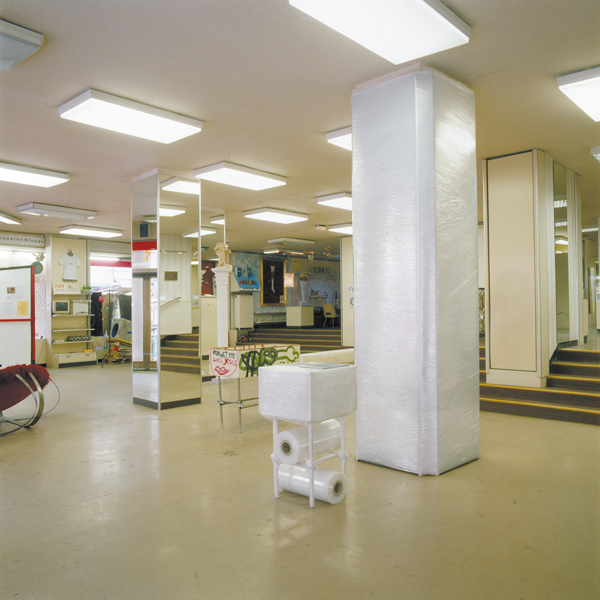
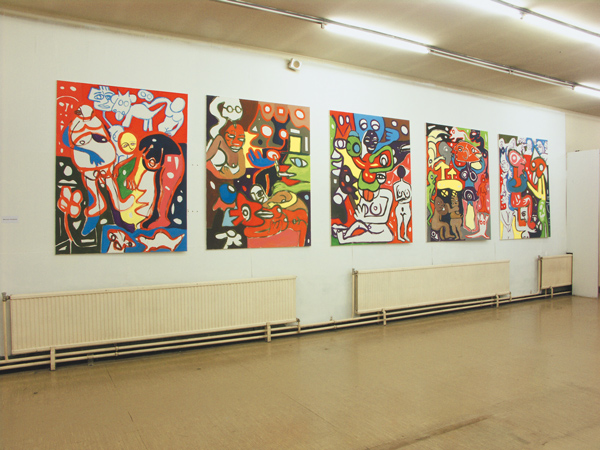

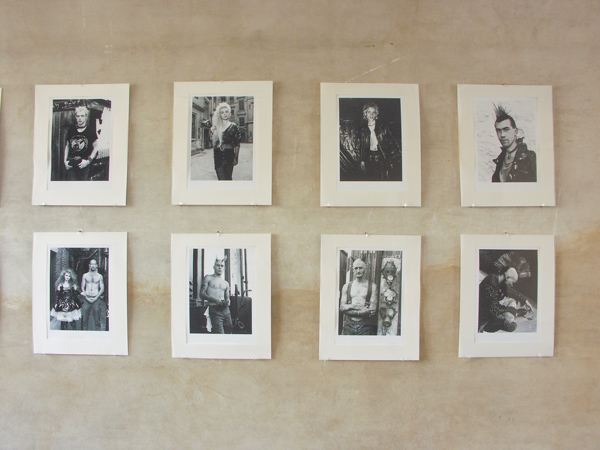

|
